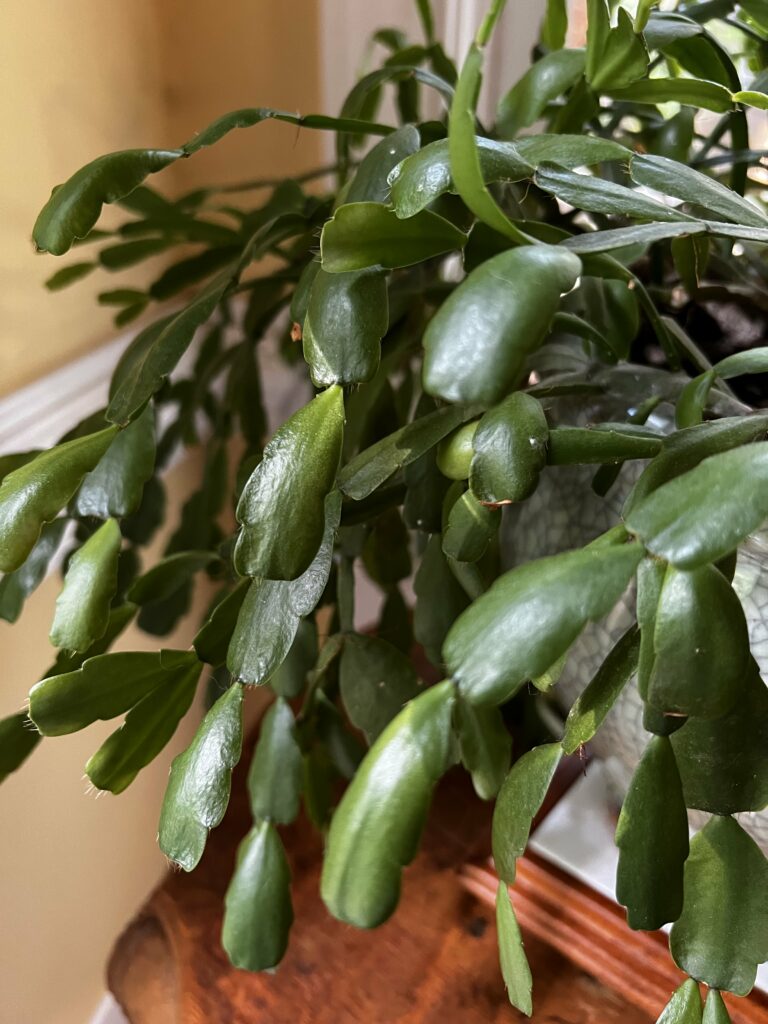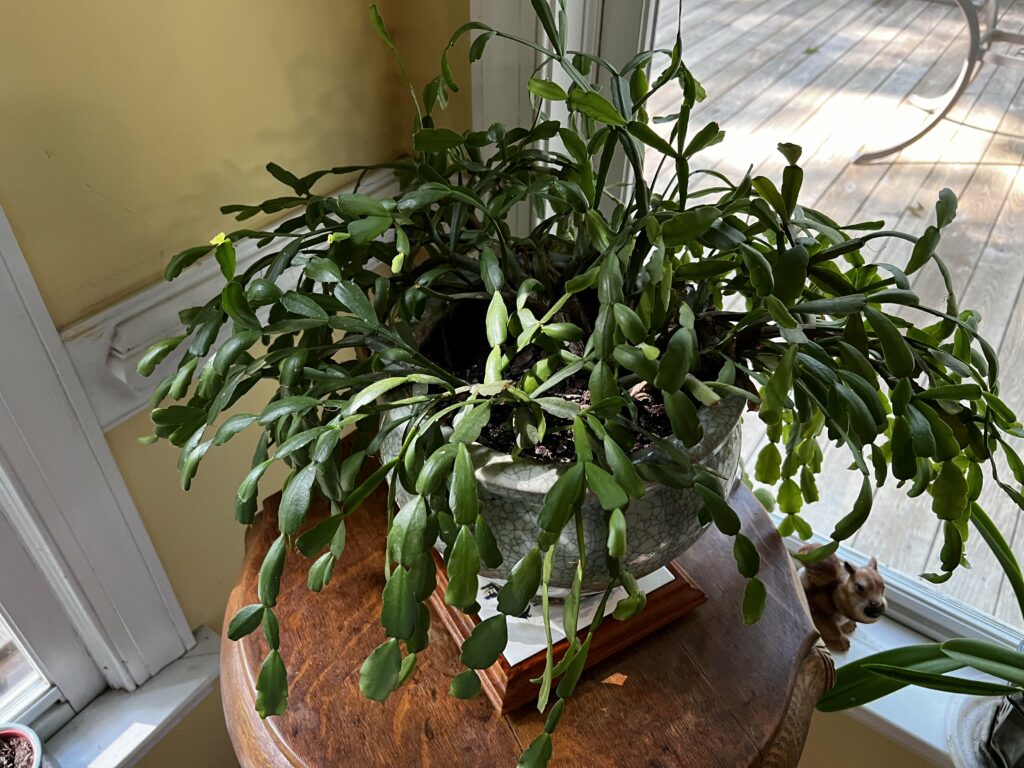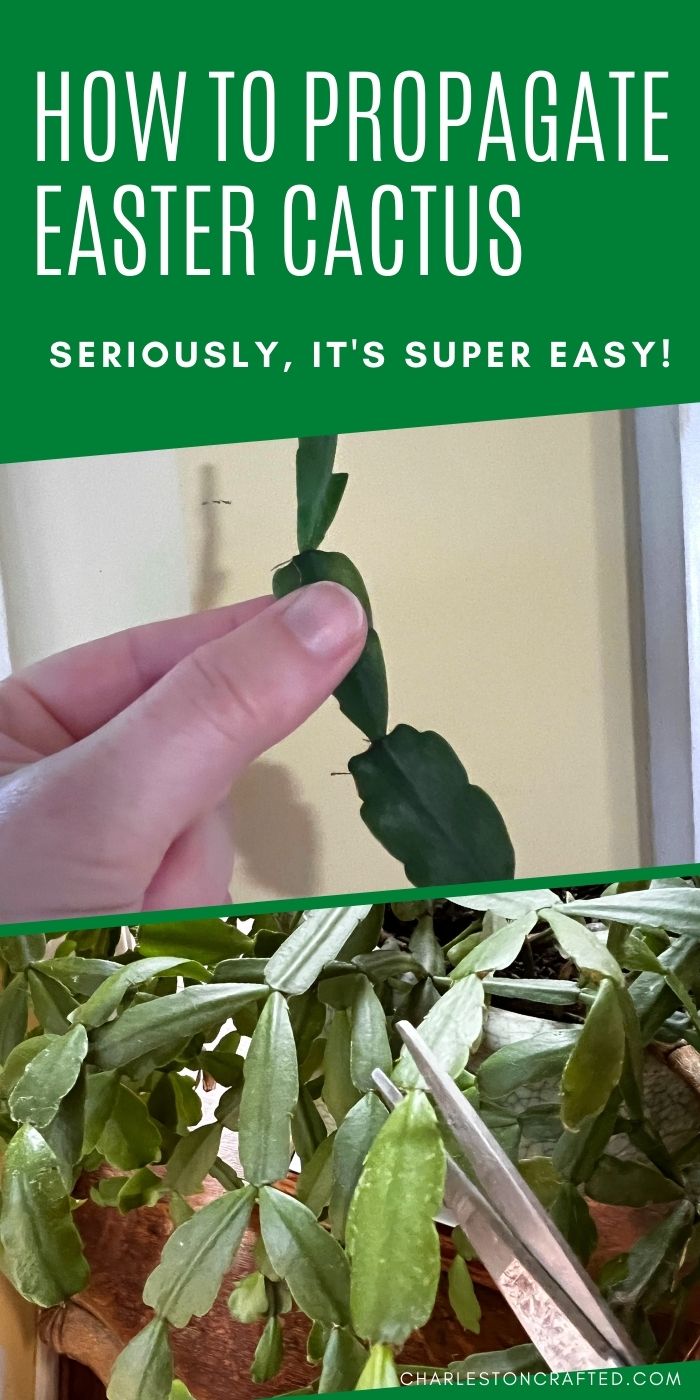Curious about the prospect of keeping your Easter cactus outdoors? Let's explore the possibilities and essential considerations for maintaining the vibrant beauty of your Easter cactus in an outdoor environment!
Unlike the stereotypical image of towering, spiny desert cacti, the Easter cactus, scientifically known as Rhipsalidopsis gaertneri, is something different.
This charming cactus originates from the tropical forests of Brazil, where it thrives in cozy nooks and crannies, nestled among other lush vegetation and the trees.
Before we delve into the world of outdoor care for your Easter cactus, it's worth noting that this epiphytic plant goes by various names within the Rhipsalidopsis genus:
- Easter cactus
- Whitsun cactus
- Spring cactus
- Hatiora cactus
Easily recognizable by flat stems adorned with delicate, scalloped edges, Easter cacti have a rich, vibrant green hue.
What truly captivates enthusiasts are the exquisite flowers that grace the tips of their stems, showcasing a vivid array of colors, including shades of pink, red, and white.
What sets the Easter cactus apart from its counterparts, including the Christmas and Thanksgiving cacti, is its distinct blooming season—primarily during the Easter period. These subtle variations, including leaf shapes, make it a unique addition to your plant collection.
As a devoted plant parent, you might find yourself pondering the prospect of outdoor care, specifically whether your Easter cactus can thrive in an outdoor setting.
To ensure the health and vibrancy of your plant, there are specific guidelines to consider.

Can you keep an Easter cactus outside?
While it is indeed possible to keep your Easter cactus in an outdoor environment, several critical factors require attention and preparation.
Let's explore its features and essential care needs in an outdoor setting.

Climate Conditions
Understanding the native habitat of a plant is fundamental to its successful care. The Easter cactus originates from tropical forests characterized by high humidity levels.
In its natural environment, it thrives in the sheltered shade beneath other trees and rocks. It favors a temperate climate and is averse to abrupt temperature fluctuations.
Easter cacti flourish in mild conditions, ideally within the temperature range of 70°F to 80°F (21°C to 26°C).
Nighttime temperatures dropping to around 55°F (12°C) are particularly conducive to the formation of flower buds. This aligns seamlessly with the Easter season.
During summer, meticulous monitoring of light exposure is imperative. Shield your Easter cactus from direct sunlight, and consider bringing it indoors during winter when temperatures dip significantly below its preferred range.
Light Exposure
In contemplating outdoor care for your Easter cactus, providing the right lighting conditions is essential.
In its natural habitat, it thrives in shaded areas with indirect light.
When kept indoors, they appreciate bright, indirect light and a sunny spot. Avoid positioning them under south-facing windows, where intense light can overwhelm them.
When placing your Easter cactus outdoors, ensure it receives some morning and evening direct sunlight, but keep this exposure limited.
Prolonged, intense sunlight during the hot afternoon hours of summer can scorch their leaves, causing harm. Thus, moderation in outdoor light exposure remains crucial.

Watering
Like many cacti, your Easter cactus requires precise watering to thrive. These plants excel in a humid environment, so replicating such conditions is essential.
The golden rule is to avoid overwatering, as excess moisture can invite pests, diseases, and root rot, especially when exposed to outdoor rainfall.
To address this, pot your Easter cactus in well-draining soil and a container featuring ample drainage holes, allowing excess water to escape.
Opt for a soil blend with a coarse texture, incorporating materials like granite chips or pumice to enhance drainage.
Prevent the soil from becoming excessively dry as well, as this can lead to root desiccation.
Water your Easter cactus when the top layer of soil feels slightly dry to the touch, ensuring the soil stays consistently moist without becoming waterlogged.
Blooming Season
Whether your Easter cactus is positioned outdoors or indoors, it will reward you with exquisite flowers on the tips of its stems.
In its native habitat, Easter cacti start blooming after the rainy season. To encourage blooming, maintain consistent conditions and provide the right amount of light.
When positioned outdoors, protect them from direct sunlight during spring and summer, ensuring they reside in shaded areas.
As autumn and winter approach, brighter light becomes essential, coupled with suitable temperatures and 13 hours of uninterrupted darkness over an eight-week period to stimulate bud production. Any interruption in this dark period, even briefly, can influence blooming.
Some gardeners employ covers, such as dark cloths or boxes, to regulate darkness when cultivating their Easter cactus outdoors.

Pruning and Maintenance
After your Easter cactus has graced you with its beautiful flowers, consider light pruning to encourage new growth and future blooms.
Pruning involves the gentle removal of faded flowers, a practice known as "deadheading." It's essential to complete pruning before late spring to avoid disrupting the plant's growth cycle.
Fertilization
Maintaining soil health is essential to support your Easter cactus. These plants thrive in humus-rich soil with good drainage. Keep the soil consistently moist without becoming overly saturated or parched.
Fertilize your Easter cactus in late winter or spring, following the conclusion of the blooming season.
Refrain from fertilizing after October begins, as this marks the onset of flower bud development.
Return to your regular fertilization routine after the blooms have fallen off, applying a half-strength, balanced fertilizer every two weeks during the spring and summer months.
In conclusion, nurturing your Easter cactus outdoors can be a rewarding endeavor, provided you create a suitable environment and maintain consistent care.
By adhering to these guidelines, you can enjoy the vibrant beauty of your Easter cactus in an outdoor setting.
Thanks for reading!


Hey there, I'm Morgan, a houseplant enthusiast from sunny Charleston, South Carolina. Growing up surrounded by my mom's lush orchids and African violets, I discovered the magic of bringing nature indoors. Thanks to the pandemic, I delved deeper into houseplants, discovering their power to uplift moods and transform spaces. I'm here to spill all my secrets, helping you pick the perfect houseplant - and make it happy. Let's keep your plants alive, together! 😊



